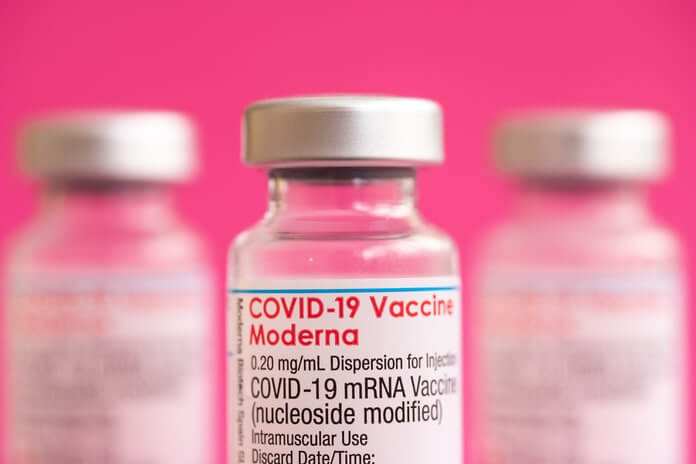Moderna (NASDAQ:MRNA) fell 28% last month. Despite higher revenues, the company’s net income fell 21% YoY in Q2 2022. I estimate the company’s 3Q 2022 sales to be lower than in 3Q 2021 and 2Q 2022 due to decreased COVID-19 vaccine demand. The timing of authorizations may boost COVID-19 vaccine sales in the fourth quarter. The business has four infectious disease vaccines in Phase 3 studies and raised R&D spending in Q2 2022. Thus, the future of the firm is bright. Short-term, hold the stock.
2Q2022 Moderna highlights
Moderna (NASDAQ:MRNA) 2Q 2022 revenues were $4.7 billion, up 7% from 2Q 2021’s $4.4 billion (due to increased COVID-19 vaccine sales due to the higher average selling price). The company’s overall operating costs climbed from $1.3 billion in 2Q 2021 to $2.3 billion in 2Q 2022. Its research and development spending grew from $421 million in 2Q 2021 to $710 million in 2Q 2022, owing to increasing clinical trial expenses, personnel-related costs, and consultancy.
Moderna’s 2Q 2022 net income was $2.2 billion, or $5.24 per diluted share, compared to $2.8 billion, or $6.46 per diluted share, in 2Q 2021. Moderna repeated $20 billion in 2022 advance purchase commitments. A $3 billion share repurchase plan was also disclosed. “Despite the slowing economy and biotech sector problems, Moderna is in a unique position: a platform to drive scale and speed in new medicine development, a robust financial sheet with $18 billion in cash, and an agile, mission-driven staff of over 3400 people and expanding,” the CEO said.
Market perspective
Moderna (NASDAQ:MRNA) COVID-19 vaccine has waning demand. 68% of the world’s population has had COVID-19. Only 21% of low-income persons have gotten the COVID-19 vaccination. COVAX has reduced the demand for MRNA vaccinations in low- and middle-income countries. In the first two months of 1Q 2022, the US delivered 14.67 million MRNA COVID-19 vaccination doses. In 2Q 2022, the US delivered 6.05 million MRNA COVID-19 vaccination doses. 4.82 million MRNA COVID-19 vaccination doses were delivered in the US in 3Q 2022. In the EU, COVID-19 vaccine doses increased by 0.7% from 151.32 million on 30 June 2022 to 152.41 million on 30 August 2022. I don’t expect COVID-19 vaccine sales to diminish in Q3 2022.
Health Canada recently approved Moderna’s Omicron-targeting bivalent COVID-19 booster vaccination for 18-year-olds and older. Moderna has FDA approval for emergency use of the bivalent COVID-19 booster vaccination for people over 18 years. Moderna forecasts 4Q 2022 revenues to be higher than 3Q 2022 owing to the timing of its revised COVID-19 vaccines.
Moderna has four infectious disease vaccines in Phase 3 trials and expects findings from rare disease and immune-oncology proof-of-concept investigations. The CEO remarked, “We’ll keep investing and growing because we’re enthusiastic about Moderna’s future.”
Expectations
Moderna (NASDAQ:MRNA) operational cash flow declined to $304 million in Q2 2022 from $4,063 million in Q2 2021. This drop in cash from operations reduced free cash flow from $2,631 million in the previous quarter to $217 million in Q2 2022. Even though its cash balance fell to $7,897 million in Q2 2022 from $10,115 million in Q1 2022, it’s practically the same as Q2 2021’s $7,990 million. MRNA’s negative net debt might allow for future debt financing.
After BioNTech (BNTX) and Pfizer (PFE), Moderna has the lowest R&D-to-sales ratio, 14.95%. This ratio measures R&D revenue. R&D investment vs. revenue patterns are challenging to interpret. Moderna’s pipeline also includes the seasonal flu vaccine, the RSV vaccine, and the CMV vaccine. If successful, the corporation may generate much profit 3-4 years later. In the future, they may have to spend more on R&D and make less income.
I analyzed Moderna (NASDAQ:MRNA) operational cash flow and CFO-to-sales ratios to assess liquidity and performance. MRNA’s operational cash flow has deteriorated progressively in recent quarters, falling 2545 bps to 4.46% in Q2 2022 from 29.91% in Q1 2021. This ratio shows how well a corporation can pay off liabilities with operating cash flow. Moderna might cover current obligations by 4.46x by the end of the second quarter. MRNA’s CFO-to-sales ratio fell to 6.4% from 45.5% in the previous quarter.
The current ratio improves quietly as current liabilities fall. Moderna’s current ratio in Q2 2022 was 1.99x, up from 1.77x in Q1 2022. The current ratio is up 60% from 2021. The MRNA’s cash ratio fell to 0.42x in Q2 2022 from 0.75x at the end of 2021, a 44% decrease.
Moderna’s second-quarter 2022 financial performance was varied. Some of the company’s financial indicators and cash and capital structures weren’t as solid as before, but new agreements and contracts, including the US army deal to provide boosters, give a positive possibility. I feel the stock is a Hold based on its current financial state.
Summary
SA ratings put Moderna’s low price target at $74 and high at $506. Bullish and bearish experts have very different price targets. Moderna (NASDAQ:MRNA) has expanded its R&D spending to generate additional vaccines, which bodes well. The business has four Phase 3 vaccinations. As most of the company’s income comes from COVID-19 vaccine sales and demand isn’t as robust as previously, the stock is a hold in the short term.
Featured Image: Megapixl © Marcosdelmazo
















